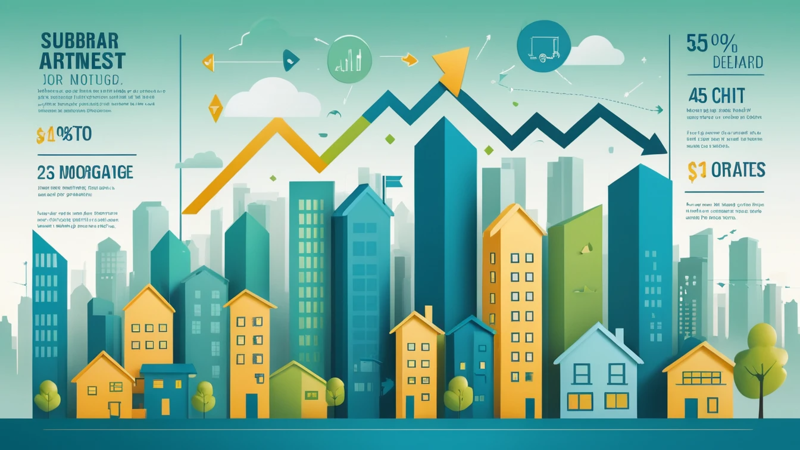Real Estate
Real Estate Housing Market Guide: Smart Insights & Trends Ahead

Real estate housing market trends explained in a clear, conversational way—learn what’s driving home prices, supply, and what matters to you now.
The real estate housing market is in a modest growth phase—home prices are rising slowly, supply is creeping up, and affordability remains a big hurdle. For buyers and sellers alike, understanding local trends, interest rates, and supply-demand balance is key to making smart decisions.
Real Estate Housing Market: What You Need To Know 🏡
Have you ever wondered why it seems harder to buy a home these days, or why sellers aren’t seeing the offers they hoped for? The real estate housing market is full of moving parts—and knowing what’s behind the scenes can help you feel in control.
At its heart the market is responding to three big things: prices, supply vs demand, and interest rates. Right now in the U.S., home prices are rising slowly, supply is increasing but still constrained, and affordability is tighter than it’s been in years.
Below, I’ll walk you through what’s happening, why it matters, and how you can navigate it whether you’re buying, selling, or just keeping an eye on the market.
What Is The Housing Market? 🧐
The “housing market” means the interaction between buyers and sellers of homes (and sometimes renters). It includes factors like:
- Home prices (what people pay)
- Inventory (how many homes are for sale)
- Sales volume (how many homes change hands)
- Interest rates (what it costs to borrow)
- Affordability (how easy it is to buy based on income)
Think of it like a big balancing scale. When demand is high and supply low, prices go up. When supply rises or demand falls, prices can flatten or drop. Right now we’re seeing a mix of both. For example: median home value around $363,932 with only about +0.1% growth year-over-year in some data.
Why This Topic Matters To You
Whether you’re buying your first home, selling, or keeping an eye on your investment, understanding the housing market gives you power.
- Buyers: You’ll know if now is a good time to act and what trade-offs to expect.
- Sellers: You’ll see whether the market is in your favor and how aggressive your pricing should be.
- Investors: You’ll spot markets with potential for growth or risk.
In short: when you know the context, you’re less likely to be surprised by changes, and more likely to make smart, confident moves.
Current Price Trends In The U.S.
Home price growth is modest. For example:
| Metric | Value |
| Median Sale Price (Sep 2025) | ~$435,285 (up ~1.7% YoY) |
| Average Home Value | ~$363,932 (up ~0.1% YoY) |
| Forecasted Growth 2025 | ~3% or less by some analysts |
This means home prices are still going up — but slowly. The frenzy of multi-offer situations is less intense than during the post-pandemic boom. Understanding this helps set realistic expectations.
Supply And Inventory: What’s Going On
Supply (how many homes are for sale) is a big piece of the puzzle. More options for buyers typically means less upward pressure on prices. Right now:
- The number of homes for sale rose by about 9.4% year-over-year in Sept 2025.
- New home listings are growing slower than previous years (e.g., 0.7% growth in one week less than a year ago).
- Months of supply (how long it would take to sell current inventory at current sales pace) is creeping upward.
More supply usually hints at a shift toward a more buyer-friendly market. That doesn’t mean prices tumble everywhere — but it means sellers may need to adjust expectations.
Demand Side: What’s Pulling Buyers In Or Holding Them Back
Demand explains how many people are actively purchasing homes and at what cost. Here are key demand drivers:
- Interest Rates: When rates are high, borrowing costs bite and fewer buyers may jump in.
- Affordability: Even if prices flatten, if income and borrowing power don’t keep up, buyers stay cautious.
- Economic Confidence: Jobs, wages, and general sentiment matter a lot.
Currently, pretty high mortgage rates and stretched affordability are cooling demand. Analysts see fewer frantic bidding wars and more measured behavior.
Regional Variations: It’s Not The Same Everywhere
One of the most important lessons: the housing market isn’t uniform. Some metro areas are booming while others are slowing. For example:
- Manchester‑Nashua, NH area showed strong value versus neighboring Boston markets.
- Some markets with heavy new construction or less demand are seeing bigger price cuts.
So always look at your specific region rather than national averages alone.
Affordability: The Silent Pressure
Affordability = how doable it is for someone to buy a home given their income, debt, and borrowing cost. Key points:
- Even with slower price growth, high interest rates can reduce how much home someone can afford.
- There’s a “housing affordability index” that many groups (like National Association of Realtors) use to gauge this.
- For many buyers, staying in place longer or renting may still feel easier than moving up.
Affordability is a major reason why demand remains muted despite plenty of supply in some areas.
What Sellers Should Know
If you’re thinking of selling your home, here are a few pointers:
- Price smart: With slower growth, overpricing risks sitting on market.
- Highlight value: Show why your home stands out (location, condition, upgrades).
- Be patient: Homes may take a bit longer to sell than peak market years.
- Prepare for negotiation: Buyers may expect concessions (repairs, closing help).
If you align with realistic pricing and strong presentation, you can still succeed — even in a more balanced market.
What Buyer’s Should Know
For homebuyers, this environment offers some advantages — but also some landmines. Keep these in mind:
- Shop interest rates: A small rate difference can mean big monthly savings.
- Don’t skip the home inspection: With more supply, some homes may need work.
- Focus on long-term value: Choose neighborhoods with good upside (schools, amenities, jobs).
- Stay liquid: Have buffer for closing costs, moving, and unexpected expenses.
Being ready and informed can give you an edge in what’s becoming a more moderate, less frenzied market.
Investment Angle: Real Estate As An Asset
If you’re considering buying real estate not just to live in, but as an investment:
| Consideration | What To Ask |
| Rental yield | What can I reasonably charge in rent? |
| Market growth potential | Is this area trending up or plateauing? |
| Supply risk | Are many new properties coming online? |
| Exit strategy | How easy will it be to sell later? |
Many investment buyers are looking at markets with more supply, better affordability, and strong growth drivers. Reports suggest institutional and small investors are stepping in more actively.
Housing Market Drivers: Beyond Prices And Supply
Here are some other factors influencing the market that you may not hear about every day:
- Demographics: Aging population, millennials forming households, migration into new regions.
- Construction costs & zoning: Limits on building raise costs and constrain supply.
- Technology & lifestyle shifts: Remote work means some buyers look further out; preferences are changing.
- Policy/Interest Rate Outlook: Central bank moves, tax incentives, and local regulations all matter.
For example, some real-estate reports mention that although inflation may be cooling, the path to lower rates is cautious and supply remains tight in many places.
Home Types & Segment Differences
Not all homes are equal in this market. Consider:
- Single-family homes: Often most in demand; good for value retention.
- Condos/townhouses: May have more supply and competition; caution warranted.
- New build vs resale: New builds often carry premiums, but may also sit if supply is heavy.
- Well-located vs outlying: Location has never been more critical for long-term value.
Your strategy should match the kind of home you want, your timeline, and your budget.
How To Read Your Local Market
Here’s a simple framework to evaluate the market where you live:
- Check supply: How many homes for sale compared to last year?
- Look at price growth: Are values rising, flat or falling?
- Measure days on market: Faster sales = hotter market; longer time = cooling.
- Interest rate trend: Are borrowing costs going up or down?
- Macro factors: Local job growth, migration, new construction.
By doing this, you’ll get a feel for whether your local market is buyer-friendly, seller-friendly, or balanced.
The Outlook: What’s Ahead For The Housing Market
Here’s what many analysts expect:
- Home price growth will stay modest, perhaps ~3% in 2025.
- Inventory will continue to rise slowly, making the market more balanced.
- Affordability constraints will remain a key challenge for many buyers.
- Some markets will outperform (especially where job growth is strong, supply is tight).
- Rate cuts may eventually help, but likely not immediately.
In short: don’t expect wild fireworks, but smart, steady moves and local variation will matter.
Mistakes To Avoid In This Market
Here are common pitfalls and how to sidestep them:
- Rushing to buy without budget buffer: Factor in repairs, taxes, insurance.
- Ignoring local market signals: National averages don’t tell your full story.
- Overestimating future value jumps: Modest growth is more realistic now.
- Underestimating how long you’ll hold the home: Longer stays mitigate market swings.
- Neglecting financing options: Interest savings add up big over time.
Staying grounded, realistic, and flexible will serve you well.
Key Takeaways: What You Should Remember ✅
- The housing market is calmer than the post-pandemic boom but still active.
- Slow price growth (~1-3%) is more the norm than double-digit jumps.
- Supply is increasing but hasn’t flooded the market everywhere.
- Affordability and interest rates are the big gatekeepers for buyers.
- Local markets matter—don’t rely solely on national data.
- Whether buying or selling, preparation and realistic expectations are your best friends.
Frequently Asked Questions
- What is the outlook for home prices this year?
Home prices are expected to rise but at a modest pace (around 3% or less) rather than big jumps. - How does housing supply affect home affordability?
When supply increases, buyers have more choices, which can ease price pressure and improve affordability over time. - What role do interest rates play in the housing market?
Interest rates determine how much you’ll pay monthly. Higher rates reduce buying power and dampen demand. - Should I focus more on local or national housing data?
While national trends provide context, local data matters more—market conditions can vary widely by city or metro. - Is now a good time to invest in real estate?
It can be—but success depends on your market, property type, timeframe, and how comfortable you are with moderate growth rather than quick profits.
-

 Real Estate3 weeks ago
Real Estate3 weeks agoCommercial Real Estate: The Ultimate Guide To Smart Property Success
-

 Real Estate2 weeks ago
Real Estate2 weeks agoReal Estate Agent: Expert Guide To Buying & Selling Homes Easily
-

 Real Estate1 week ago
Real Estate1 week agoReal Estate License – Your Complete Guide To Starting Strong Today
-

 Commercial Property1 week ago
Commercial Property1 week agoHow To Analyze A Commercial Lease – Expert Guide For Smart Investors




